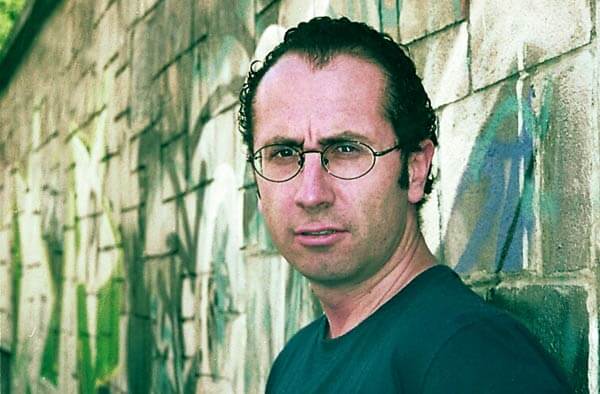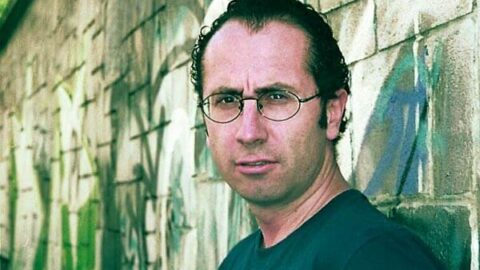 The late composer Fausto Romitelli, who passed away in 2004 at the age of 41 from a tragic illness, sculpted his compositions with an aggressive physicality. He considered “sound as a material into which one plunges, in order to forge its physical and perceptive characteristics….” His last work, An Index of Metals (2003), was conceived of as a culmination of this physical work, in which he had the “desire to create a total perceptive experience… to immerse the spectator in an incandescent, enveloping material.” To do this, he created a “video opera” for Soprano, ensemble and multimedia projection with composer and video artist Paolo Pachini, with text by Yugoslavian writer Kenka Lèkovich. Together, they wanted to create a “furnace of sensations.”
The late composer Fausto Romitelli, who passed away in 2004 at the age of 41 from a tragic illness, sculpted his compositions with an aggressive physicality. He considered “sound as a material into which one plunges, in order to forge its physical and perceptive characteristics….” His last work, An Index of Metals (2003), was conceived of as a culmination of this physical work, in which he had the “desire to create a total perceptive experience… to immerse the spectator in an incandescent, enveloping material.” To do this, he created a “video opera” for Soprano, ensemble and multimedia projection with composer and video artist Paolo Pachini, with text by Yugoslavian writer Kenka Lèkovich. Together, they wanted to create a “furnace of sensations.”

A recent performance of An Index of Metals at Theater an der Wien in Vienna on Thursday, January 30 failed to fully immerse the listener in any kind of sensory onslaught, giving an oddly clean and tidy performance of this high art/low art mashup. In spite of falling short of the promised total-art experience, it still a very interesting evening, musically. Performed by the Klangforum Wien under Baldur Brönnimann with Barbara Hannigan as the soprano soloist, the musicians did create a kind of musical heat.
The text for this piece reads like an abstract version of grunge rock lyrics, peppered with industrial imagery and interpersonal angst. Hannigan’s huge presence and equally giant voice were up to the task, though her low register at times lacked the necessary dirt to convincingly growl out some sections. Romitelli’s music fulfilled his aim of “a constant drift towards unsustainable densities, distorsions and interferences.” He built towards these unsustainable densities in varied and interesting ways, sometimes layering a slow rock ballad of power chords in the electric bass and guitar underneath textures of woodwind extended techniques, at other times employing a slowed-down minimalist repetitiveness. The ensemble is a mashup of strings, winds, and brass instruments against electric guitar and bass guitar, synthesizers and electronics. Romitelli used this ensemble to create both delicate, layered textures and auditory walls of noise. Whenever they arrived at the many grindingly thick and dissonant stations, the Brönnimann and the Klangforum did what they do best, maintaining structure and balance in the midst of almost unbearable complexity.

The video projections for this evening were lacking in interest, and failed to provide the promised total sensory experience. Added to this was the awkward layout of the stage, where the video projections were up so high that many had to strain their necks to see anything. The oddly sterile environment of the Theater an der Wien did nothing to help this situation, the cold and formal space freezing out any rebellious or aggressive tendencies from the visual aspect of the production. The staid Viennese audience, a few of whom left the theatre conspicuously during the terminal distorted guitar and bass guitar cadenza, may also have added to the chill.
Better, then, to close one’s eyes during this lacklustre production, and imagine a garage in Seattle in 1989, where a rebellious and teenage Hannigan is jamming with the Klangforum, churning out an onslaught of expressionist-level angst, drinking cheap beer and passing around a joint. This is, perhaps, the purest form of suspension of disbelief, and close to what Romitelli had in mind.
























